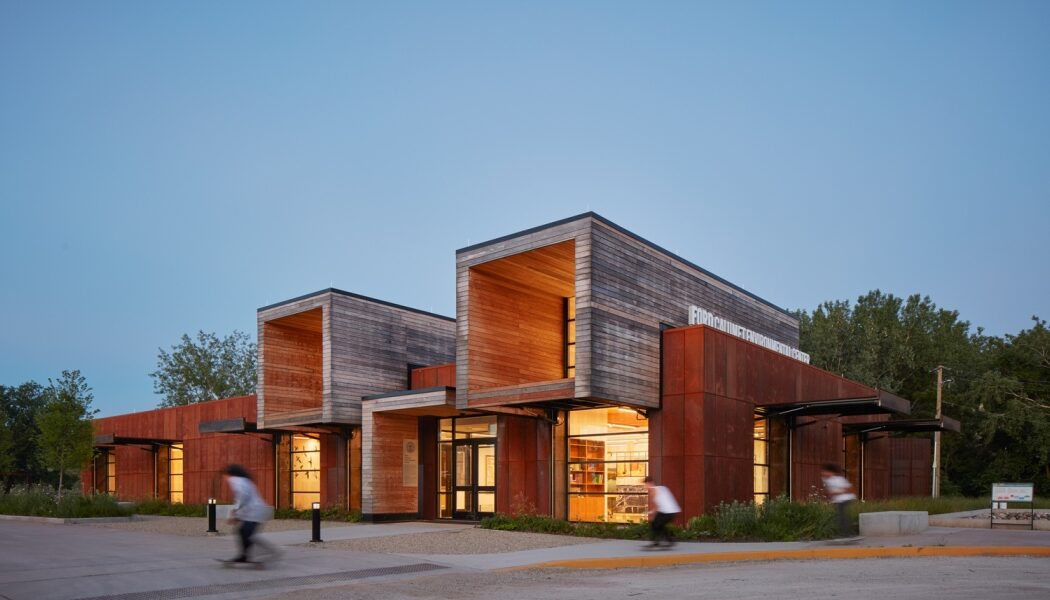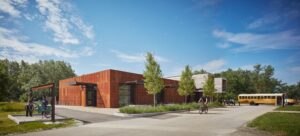Once an ecological paradise dominated by wetlands, the Calumet Region was altered by more than a century of industrialization as Chicago, Illinois grew into a giant metropolitan area.
The paucity of environmental regulations prior to 1970s left landscapes covered in slag from the area’s numerous steel mills.
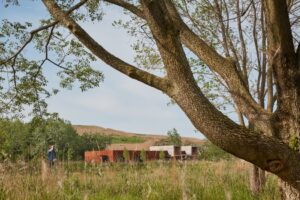 Now, one of those slag-damaged natural landscapes has become Big Marsh Park, the Chicago Park District’s largest reclamation project.
Now, one of those slag-damaged natural landscapes has become Big Marsh Park, the Chicago Park District’s largest reclamation project.
In recent years, with the growth of the global restoration economy, restorative efforts have aimed to set the park on a revitalizing new course; one where industry, nature, and culture can safely coexist.
Designed by Valerio Dewalt Train, Big Marsh Park is now home to a 45-acre bike park and a series of walking trails that provide eco-recreation opportunities in Chicago’s Southeast Side.
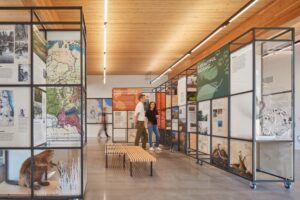
Beyond Sustainability: Look closely, and you’ll see the “restoration economy” themes of reclamation and restoration in this leading-edge environmental education facility.
At the park’s entrance, the Ford Calumet Environmental Center (FCEC) serves as both a gateway and a hub—educating visitors about its past and setting precedent for a new, sustainable future throughout the Calumet Region.
The 9300-square-foot facility is designed for education and park services, featuring a permanent exhibit about the site and region, classroom spaces, offices, a bike repair area, restrooms, and storage spaces.
The building’s materials reinforce its mission, with weathered steel cladding that recalls the site’s industrial past, in contrast to exposed Nail Laminated Timber (NLT) which alludes to an environmentally-responsive future.
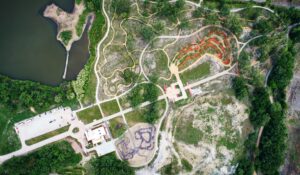 Two large rooftop light monitors clad in wood cantilever over the entrance, flooding the interior double-height exhibition area with daylight.
Two large rooftop light monitors clad in wood cantilever over the entrance, flooding the interior double-height exhibition area with daylight.
Upon entry, visitors are introduced to the Calumet Region and the story of Big Marsh Park through the exhibit. Steel frames display information on wood and acrylic panels next to encased taxidermy and custom wall murals.
Recognizing that the building would be used for a wide range of events and activities, the interiors were designed with flexibility in mind. All of the displays are set on casters so that they can be easily wheeled to a storage room. On the opposite side, the classrooms have a retractable wall to divide or open the space.
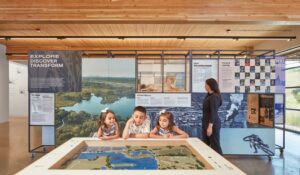 The Chicago Parks District wanted the building to convey a sense of openness while also retaining the ability to be secured when park staff was not on site. In response, the center has 10-foot-square floor-to-ceiling windows facing the park that allow natural light deep into the space.
The Chicago Parks District wanted the building to convey a sense of openness while also retaining the ability to be secured when park staff was not on site. In response, the center has 10-foot-square floor-to-ceiling windows facing the park that allow natural light deep into the space.
Large operable hydraulic hangar doors made of steel, hinge downwards to fit flush with the exterior wall, covering windows to secure the facility when it is closed. The doors’ perforated metal screens preserve the visibility of the interior.
Given the marsh’s importance to migrating birds, it was essential that the design be bird-friendly.
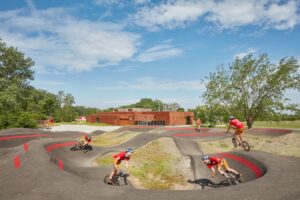 The hangar doors form a canopy over the fritted glass when raised, providing shade and ensuring that birds flying overhead do not see landscape reflected in the windows and fly into them by mistake.
The hangar doors form a canopy over the fritted glass when raised, providing shade and ensuring that birds flying overhead do not see landscape reflected in the windows and fly into them by mistake.
The FCEC uses a constructed wastewater wetlands system—the first in Chicago and one of the first in Illinois.
Its design takes inspiration from the park itself using the same processes which naturally occur in the marsh to produce clean water that is put back into the site via a leach field.
The plants and other organisms in the system are used to filter the building’s blackwater, instead of putting it into the City’s already overloaded sewer system.
The Ford Calumet Environmental Center is a bold expression of a larger initiative striving toward the reclamation of a landscape tarnished by industry.
Through environmental education and eco-recreation, the center aims to cultivate advocacy for regenerative change across the Calumet Region.
All images are by Tom Harris/Valerio Dewalt Train.

